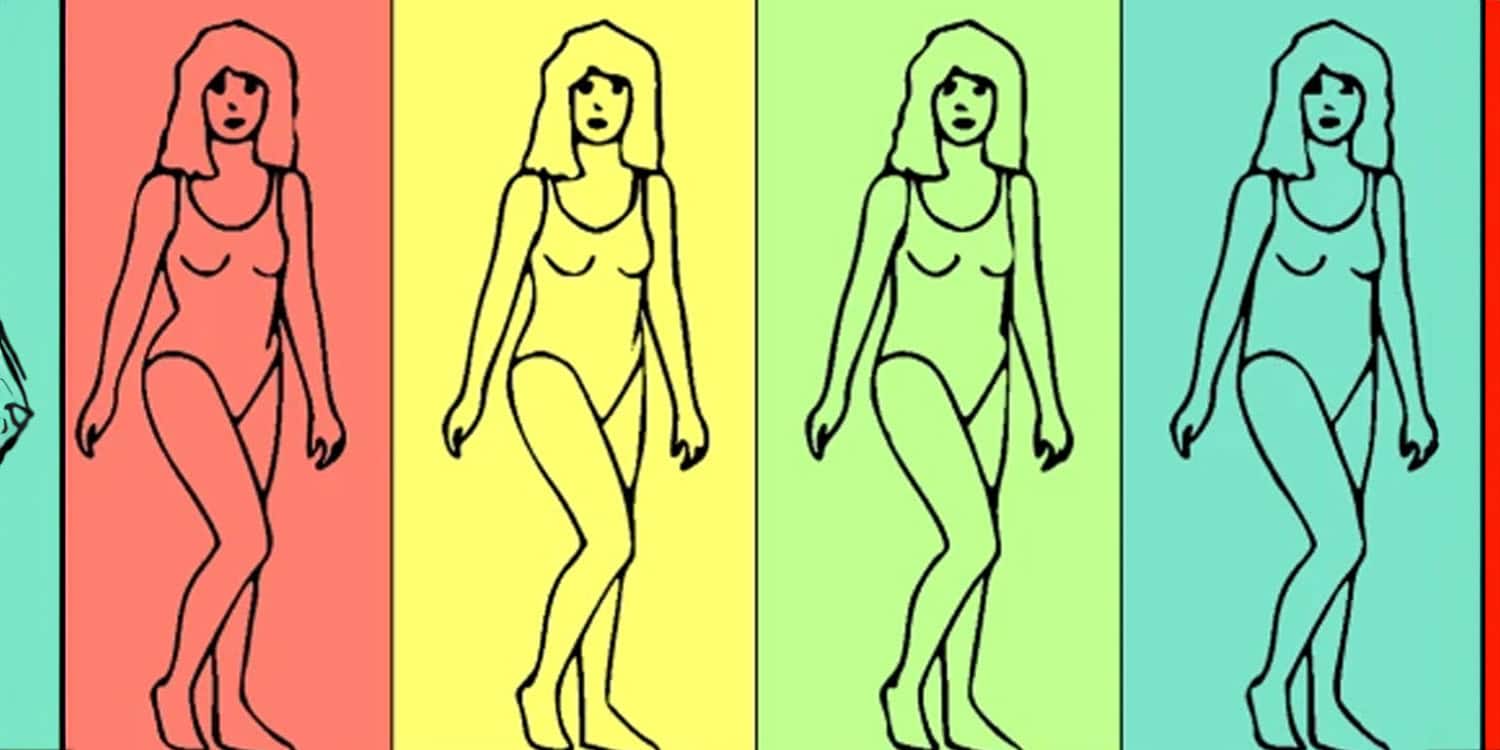Two experiments in Germany using line drawings of female bodies suggest that perceived attractiveness of a woman’s body depends more on its curviness than on the waist-to-hip ratio. The research was published in Scientific Reports.
When it comes to judging the attractiveness of the human body, both artists and scientists have long believed that certain proportions play a central role. For centuries, artists have explored the concept of the “golden ratio,” a mathematical proportion that is thought to be inherently pleasing to the human eye. In aesthetics research, these ratios have proven useful for studying human perception of beauty because they simplify the complex shapes of the human body into measurable, easy-to-assess proportions.
One specific proportion that researchers frequently emphasize in studies of female beauty is the waist-to-hip ratio, which is calculated by dividing the circumference of the waist by the circumference of the hips. A lower waist-to-hip ratio, typically around 0.7, is often linked to higher attractiveness ratings. Evolutionary psychologists suggest this ratio may act as a cue for health and fertility, signaling to potential mates that a woman could be reproductively fit.
However, Ronald Hübner and Emily Sophie Ufken, the study authors, questioned whether waist-to-hip ratio alone might oversimplify the factors that contribute to perceived attractiveness. They wanted to see if the curviness of the body’s shape—a feature that encompasses more than just the waist and hip measurements—might offer a better predictor of attractiveness. They note that although waist-to-hip ratio and curviness are related, curviness might provide a more comprehensive understanding of body shape, especially when considering the overall contours of the torso.
To explore this question, the researchers conducted two experiments, both of which involved participants rating the attractiveness of line drawings representing different female body figures.
The first experiment involved 80 adults, mostly students from the University of Konstanz in Germany, including 25 men, with an average age of around 28 to 29 years. Participants were shown a set of 12 line drawings of female bodies and asked to rate each figure on a scale of 1 to 100, indicating how attractive they found each body. Importantly, in this experiment, each drawing’s curviness was perfectly matched with its waist-to-hip ratio, meaning the two features were aligned and thus could not be independently assessed. This setup allowed the researchers to first test whether waist-to-hip ratio alone could predict attractiveness in line with previous studies.
In the second experiment, Hübner and Ufken modified the drawings to vary the curviness of the lateral body contours independently of the waist-to-hip ratio. This method created a sample in which curviness and waist-to-hip ratio were no longer aligned, allowing the researchers to test how each feature influenced perceived attractiveness separately. The second experiment involved 98 adults, again mostly students from the University of Konstanz, who viewed a set of 25 line drawings. These figures differed both in waist-to-hip ratios and in curviness, giving participants a broader range of body shapes to rate.
The first experiment confirmed some traditional findings. Participants rated bodies with lower waist-to-hip ratios as more attractive and generally preferred figures representing women of normal weight over those of other weights. The figure with a waist-to-hip ratio of 0.7 consistently received the highest ratings, aligning with the idea that a waist circumference about 30% smaller than the hip circumference is seen as most attractive. These results fit within the common understanding that a lower waist-to-hip ratio is associated with higher attractiveness.
However, the findings of the second experiment were different. While a waist-to-hip ratio of 0.7 was still rated most attractive for the narrowest body widths, this was no longer the case as body width increased. For larger body widths, curviness became a more reliable indicator of attractiveness, suggesting that a fixed waist-to-hip ratio was not a universally applicable measure. Instead, bodies with a moderate level of curviness—based on the contour shapes used in the drawings—received the highest attractiveness ratings, regardless of their waist-to-hip ratios. This indicates that curviness itself plays a key role in perceived attractiveness, particularly as body shapes move beyond narrower frames.
“Theoretical considerations suggest that the waist-to-hip ratio (WHR) cannot serve as a valid indicator of curviness, contrary to what is frequently assumed, either implicitly or explicitly. Consequently, one of these two attributes must be a more effective predictor of a woman’s body attractiveness. The results of this study clearly show that curviness is far superior to the WHR in this respect,” the study authors concluded.
The study sheds light on elements people rely on to judge the beauty of female body contours. However, the study used ratings of line drawings of female bodies, not ratings of real body shapes. Results might not be the same if participants rated real body shapes rather than pictures.
The paper, “Curviness is a better predictor of a woman’s body attractiveness than the waist-to-hip ratio,” was authored by Ronald Hübner and Emily Sophie Ufken.




